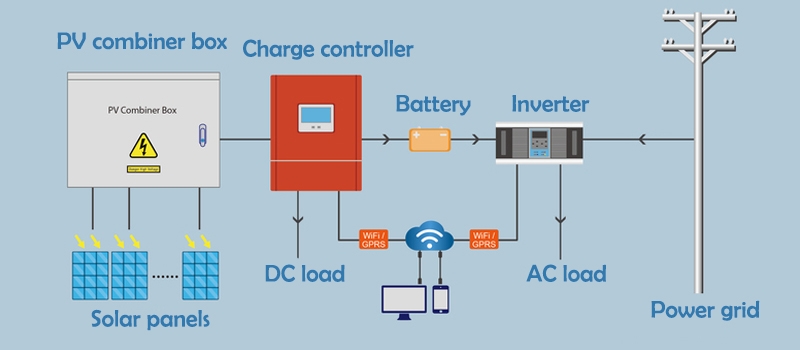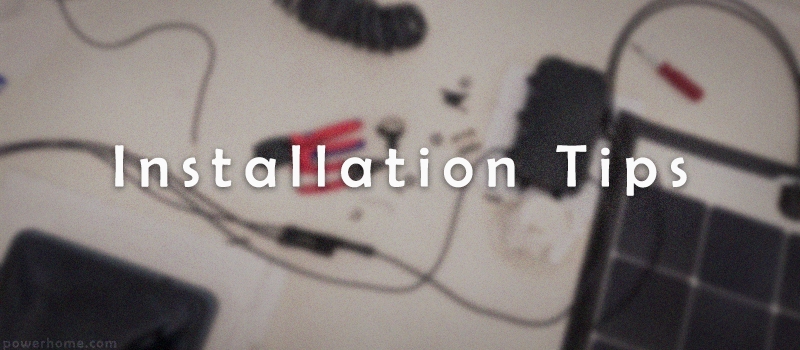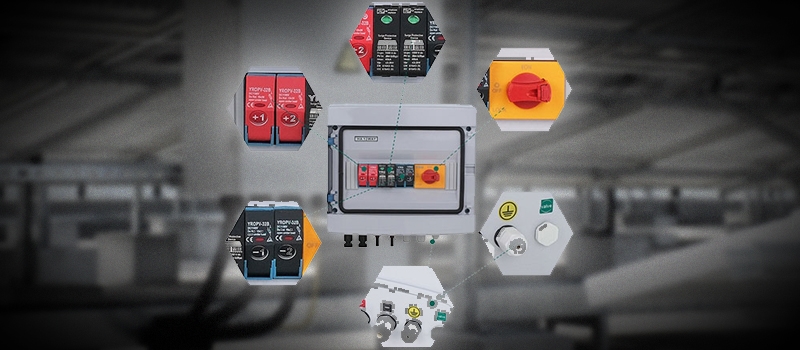PV combiner box is an important part of PV power system, it is mainly used to pool the output cables of multiple PV modules into one cable for easy transportation and management. Although a solar combiner box may only occupy 1% of the total solar system, 100% of the current flows through it, and an incorrectly installed combiner box means a great safety hazard. PowerHome will introduce you to the installation of PV combiner boxes, as well as the things you need to pay attention to before and after the installation.
Technical Requirements for PV Combiner Box
Due to the important responsibility of managing and protecting solar panels in a PV system, a qualified PV combiner box must meet the following requirements:
General Requirements
- Box structure should be sealed, dustproof, moisture-proof, and sufficient mechanical strength, should be able to withstand the installation of components and short-circuit generated by the dynamic, thermal stability impulse.
- The protection level of the housing should be not less than IP65.
- The wiring in the combiner box should be neat and beautiful, easy to maintain and install. Terminal rows should have a partition, labeled wire sets and terminal screws. Each terminal block should be labeled with a number.
- The box should be equipped with PV array wire or cable entry holes, and waterproof terminals and grounding wires for busbar cables to enter and exit.
Performance Requirements
- All electrical circuits inside the combiner box should have voltage withstand value of not less than DC1000V.
- The combiner box should be equipped with switching power supply.
- The combiner box should have the function of monitoring the current of each incoming line.
Let me show you an amazing product: 1000W, 2-in-1-out PV combiner box. It's made of high-quality HA material, so it's resistant to high temperatures and corrosion. Its maximum voltage rating is 1000V, and each port at the bottom is labeled with a number. It's also got a simple design and clear wiring, plus other great features, which makes it perfect for PV combiner boxes.
How to install a PV combiner box?
Preparation Beforehand
- Check the Location: Choose a dry, well-ventilated place and make sure the mounting wall or pillar is strong enough to withstand its weight. You also need to reserve space for future inspection and maintenance. Do not choose a place with direct sunlight or high temperature, as this can be very dangerous.
- Check the Device: Before installation, it's a good idea to check the appearance of the PV combiner box. Make sure it's intact, the internal components are complete, and there's no damage or looseness.
- Prepare Tools: Make sure you have all the right tools. Things like PV brackets, expansion screws, screwdrivers, and wrenches are great to have on hand. And don't forget to pack some personal safety equipment like helmets and insulated gloves.
PV combiner boxes can be mounted on a wall, post, or on the ground. If you choose to mount on a pole or on the ground, you will need to use brackets to add support and stability, as well as to avoid being affected by moisture on the ground.
Installation Steps
-
Secure the PV combiner box to the wall or bracket using expansion screws or bolts to ensure a firm fixing. Pay attention to the direction and position of the solar combiner box to ensure that it is easily connected to the solar modules. Generally, the inputs and outputs of the combiner box as well as the external interfaces such as communication and grounding are located at the bottom or side of the enclosure.
-
According to the wiring diagram, connect the output cables of the PV modules to the input terminals of the combiner box. Ensure that the connection is firm and free from looseness, and you can use waterproof connectors or insulating tape for further protection. As shown in the figure below, the complete solar system also includes a solar charge/discharge controller and an inverter.

-
Connect the DC output cable from the combiner box to the inverter or other DC device, again ensuring that the connection is tight and the necessary protective measures are taken.
-
For safety considerations, after connecting the PV combiner box to the power generation system, the grounding terminal of the box should be reliably connected to the lightning protection ground wire or busbar. Appropriate grounding conductor should be selected, and it is also necessary to ensure that the grounding resistance meets the relevant standards.
-
Once the installation is complete, inspect all connections for looseness and the appearance of the convergence box for damage or deformation. Use a multimeter to perform electrical tests to confirm that the parameters of the PV combiner box are normal and observe whether the PV system is working properly.
Installation Tips

- Follow the instructions and standards during the installation process to ensure the quality and safety of the installation.
- Follow all local electrical safety codes and standards to ensure your own PV system operates safely. To light your off-grid home, you must first ensure your safety.
- Do not install under adverse weather conditions, such as thunderstorms and windy weather.
- Users are responsible for having the necessary electrical knowledge and skills or hiring a professional electrical engineer to complete the installation.
- Connecting the cables correctly is essential to avoid reverse jointing and misconnection. Ensure you pay attention to the polarity and phase sequence of the cables.
- Check the operating status of the PV combiner box regularly, including appearance, connection, temperature, etc. If problems are found, deal with them promptly. Disconnect the power supply before carrying out maintenance and overhaul to ensure safety.
The installation and wiring of the PV combiner box is crucial to the success of a PV power generation system. By following relevant norms and standards, you can ensure the system's stability and efficiency. During the installation and wiring process, it is essential to inspect and maintain the system to identify and resolve any issues promptly. This will guarantee the long-term stability and reliability of the PV power generation system.
(1).png)

(1).png)